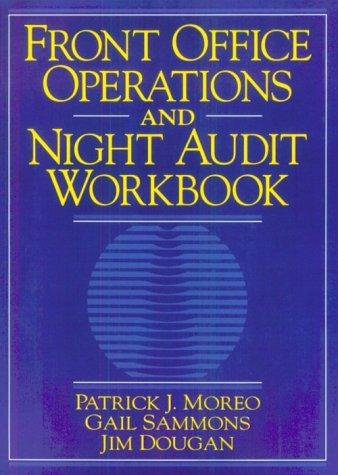Question
When should a US entity not include an estimate of variable consideration in determining the transaction price? Company X sells standard lawn mowers to Biggy
-
When should a US entity not include an estimate of variable consideration in determining the transaction price?
-
Company X sells standard lawn mowers to Biggy Hardware (BH) for $100. BH is Company Xs largest customer. Company X offers BH the following discounts based on purchases in a calendar year:
1 to 999 lawn mowers: 0% discount
1,000 to 1,500 lawn mowers: 3% discount
More than 1,500 lawn mowers: 5% discount
BHs purchasing pattern has been very consistent over its twenty year relationship history with Company X. Company Xs management has assigned a 10% probability to a 0% discount, a 70% probability to a 3% discount and a 20% probability to a 5% discount.
-
What is the estimated transaction price if the most likely amount is used?
-
What is the estimated transaction price if the expected value method is used?
-
Should any of the estimated variable consideration included in the transaction price be constrained?
-
World Soccer sells new goals to a customer for $1 million. The goals are delivered immediately, but payment isnt due until two years from the purchase date. The typical credit rate for this customer because of its credit characteristics is 8%. What are the journal entries World Soccer will record over the two-year period?
-
New Tech sells new widgets for $1,000. One of its customers is short on cash so they pay $800 in cash and trade in a used widget with a fair value of $300. What is the journal entry New Tech would record for this transaction?
-
ABC Corporation enters into a contract with a customer to sell items for $90,000. The contract includes two items of product A and one item of each product B and C. The standalone purchase price is $15,000 for product A, $25,000 for product B and $45,000 for product C. How should ABC Corporation allocate the transaction price for this contract?
-
Green View Corporation (GVC) enters into a contract to sell four products (A, B, C and D) for a total transaction price of $500,000. Each product is properly classified as a separate performance obligation. GVC only sells products A and B on an individual basis, thus it must estimate the standalone selling prices for product C and D. Information on these four products follows:
|
Product | Standalone selling price | Forecasted cost | Market competitor price |
| A | $100,000 | $ 80,000 | $108,000 |
| B | 200,000 | 166,000 | 206,000 |
| C | Not available | 82,000 | 102,000 |
| D | Not available | 72,000 | 94,000 |
| Total |
| $400,000 | $510,000 |
-
How should GVC allocate the transaction price to the four products using the cost plus margin approach?
-
How should GVC allocate the transaction price to the four products using the adjusted market assessment approach?
-
How should GVC allocate the transaction price to the four products using the residual approach?
Step by Step Solution
There are 3 Steps involved in it
Step: 1

Get Instant Access to Expert-Tailored Solutions
See step-by-step solutions with expert insights and AI powered tools for academic success
Step: 2

Step: 3

Ace Your Homework with AI
Get the answers you need in no time with our AI-driven, step-by-step assistance
Get Started


